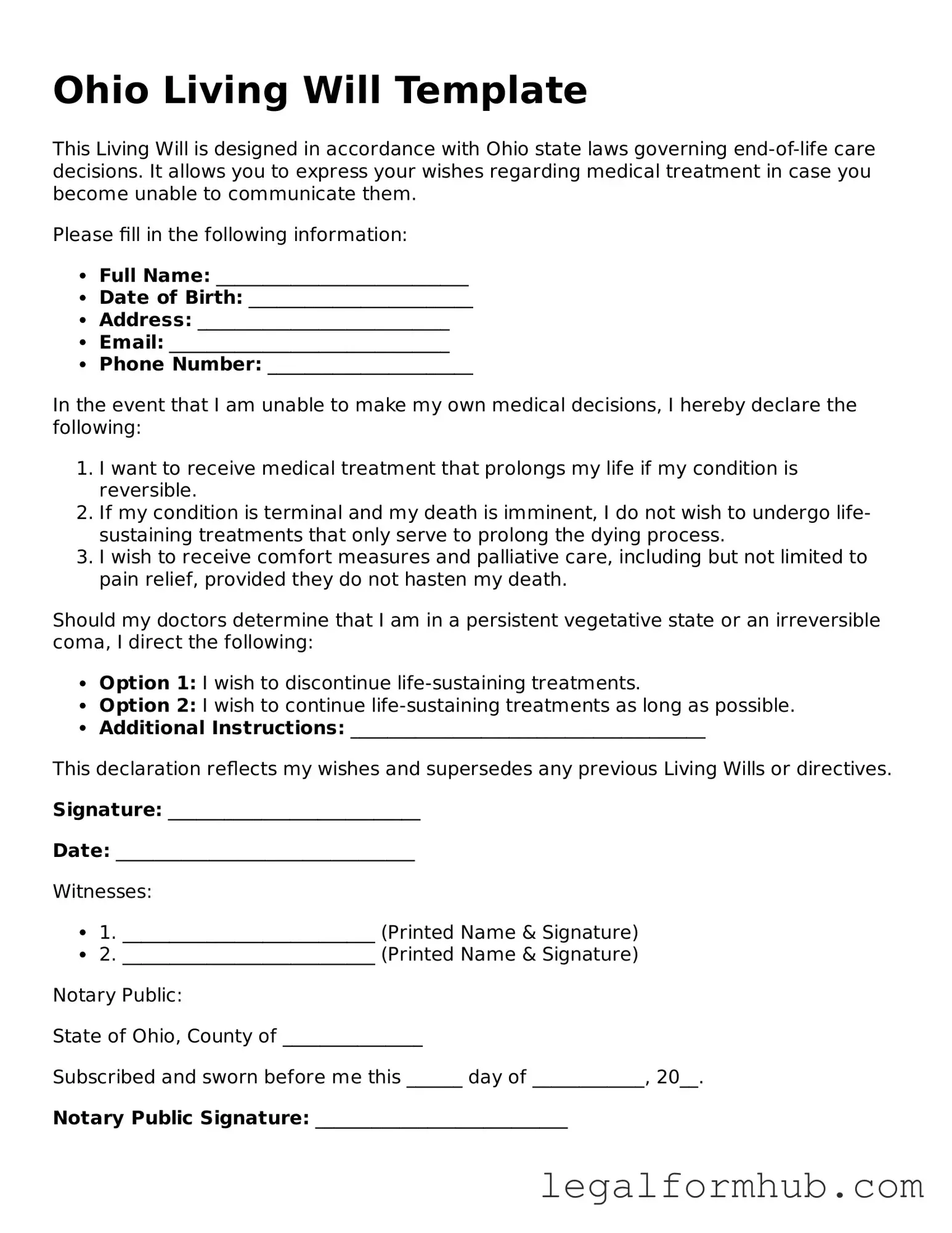Free Living Will Template for Ohio
The Ohio Living Will form is a legal document that allows individuals to outline their preferences for medical treatment in the event they become unable to communicate their wishes. This form serves as a crucial tool for ensuring that a person's healthcare decisions are respected, even when they cannot speak for themselves. By using this document, individuals can provide clear guidance to their loved ones and medical providers about their end-of-life care preferences.
Open Living Will Editor Here
